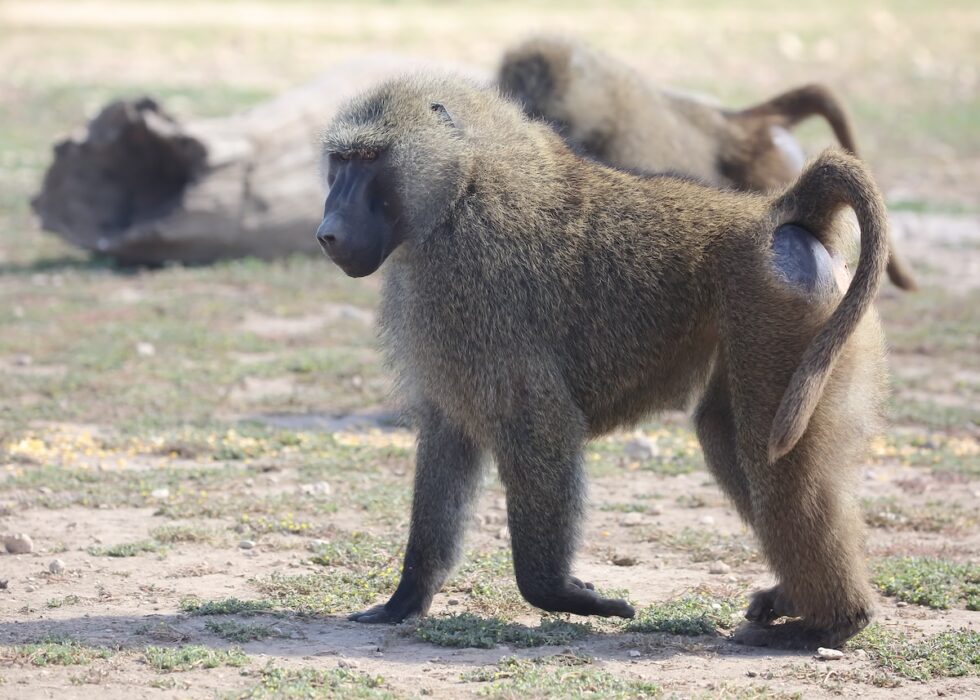SAN ANTONIO (Feb. 15, 2025) — How long do nonhuman primates live in captivity? It seems like a simple enough question, yet research led by Texas Biomedical Research Institute (Texas Biomed) is showing that getting a clear answer is a challenge.

“I started out wanting to figure out how long baboons live because that is critical to correlate age and aging processes to humans,” said Texas Biomed Staff Scientist Hillary F. Huber, Ph.D., who led the project. “I started asking around to other research institutes and realized that we don’t have a great understanding of the lifespan of a lot of primate species.”
She and collaborators at Wake Forest University, including biostatistician Hannah Ainsworth, Ph.D., set out to fix that, amassing the largest database to date focused on the lifespan of nonhuman primates common in biomedical research. It encompasses data about 12 species from 15 institutes, including all seven federally-designated National Primate Research Centers. (Texas Biomed hosts the Southwest National Primate Research Center.)
A thorough analysis recently published in GeroScience revealed a surprise: the median lifespan for many primates involved in biomedical research, from marmosets to macaques to baboons, is lower than previously reported.
Not as old

Baboons are often reported to have a lifespan of 37.5 years, which is based on a single zoo animal. This analysis shows the maximum observed lifespan for both male and female baboons at research institutes is 30 years old, and that the median age at death is far younger – about 11.5 years old. Median, which is the middle point of the range, is considered a more useful indicator than maximum because it reflects average lifespan. It means 50% of baboons (who survived to adulthood to begin with) live to be at least 11.5 years old.
“Imagine if you went to the doctor and asked how long you can expect to live, and the doctor told you, ‘Humans can live to be 120 years old!’” Dr. Huber said. “While interesting, this number is not especially useful to knowing how long your life might be. You want to know your expected lifespan, the average age someone like you lives to be.”
Rhesus macaques, the most common nonhuman primate used in biomedical research, have historically been thought to live into their thirties, although a long running study of extending lifespan through lifestyle changes in rhesus macaques has pushed their lifespan into their forties. This analysis found the maximum age is 42 for females and 44 for males, while the median age at death is 10 for females and 7 for males.
“Having a more accurate understanding of how long nonhuman primates live in captivity is essential for researchers to correctly correlate health and disease observations in primates to humans,” Dr. Huber said.
Different criteria
The discrepancies between previous estimates and this analysis are largely due to methodologies, Dr. Huber explained. For example, many lifespan analyses will include animals that are still alive or that died before making it to adulthood, but those approaches significantly skew the results.
“We used very strict inclusion criteria,” said Dr. Huber. “We started with data for more than 110,000 animals and our analysis ended up including around 12,000 – we could be very strict and still have a huge dataset to work with and that means the results are uniform across species and very robust.”
Notably, they only included animals who had a known birth and death date and died of natural causes or were humanely euthanized because they had developed a serious disease such as cancer. The primary analysis did not include any animals euthanized as part of research studies.
Nonhuman primates, as our closest relatives, are the gold standard for understanding how an entire system will respond to treatments and medicines, before trying them in humans for the first time.
Healthspan indicators
While the analysis set out to clarify median lifespan, Dr. Huber and her collaborators acknowledge this may be nearly impossible in the biomedical research setting. Much like personal pets, animals are humanely euthanized if they develop a major disease or chronic condition like cancer or diabetes. This makes it harder to pin down natural lifespan.
However, the median age at death for many species lined up very closely with ages that those animals typically develop their first age-related disease. Therefore, the analysis sheds light on lifespan and does an even better job highlighting the age at which research primates begin to naturally develop serious diseases, a hallmark of aging.
“We call this healthspan – the length of healthy life free of major diseases,” Dr. Huber said. In the last decade, geroscience research has shifted toward trying to increase human healthspan to improve quality of life throughout the lifespan.”
Dr. Huber and colleagues have recently received an R01 grant from the National Institute on Aging to gain more detailed insights about how sex, body size and life history influence lifespan and healthspan, and identify clear clinical and molecular biomarkers of aging within and across species.
Paper:
Huber, H.F., Ainsworth, H.C., Quillen, E.E. et al. Comparative lifespan and healthspan of nonhuman primate species common to biomedical research. GeroScience (2024). https://doi.org/10.1007/s11357-024-01421-8